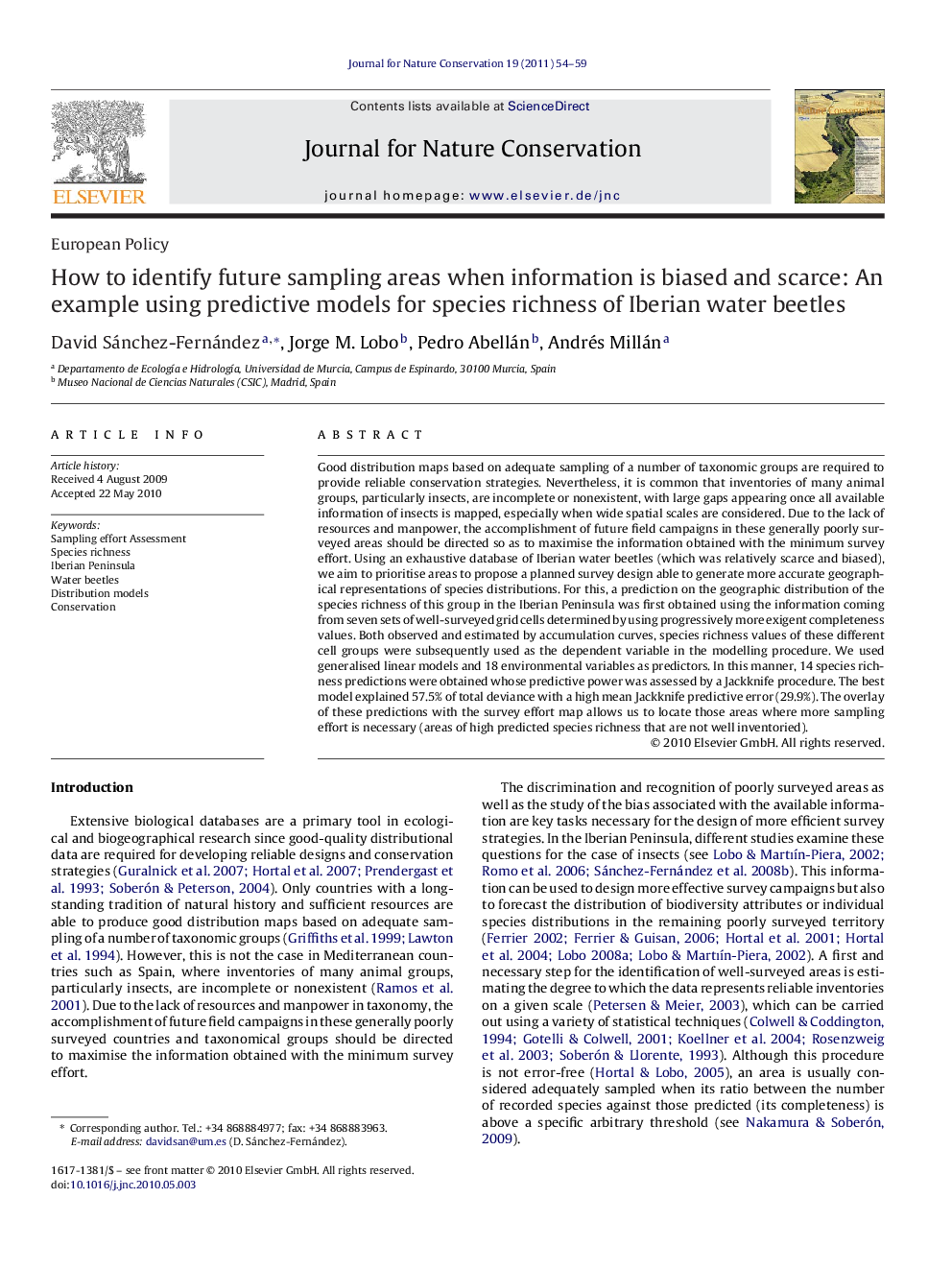| کد مقاله | کد نشریه | سال انتشار | مقاله انگلیسی | نسخه تمام متن |
|---|---|---|---|---|
| 4400154 | 1306917 | 2011 | 6 صفحه PDF | دانلود رایگان |

Good distribution maps based on adequate sampling of a number of taxonomic groups are required to provide reliable conservation strategies. Nevertheless, it is common that inventories of many animal groups, particularly insects, are incomplete or nonexistent, with large gaps appearing once all available information of insects is mapped, especially when wide spatial scales are considered. Due to the lack of resources and manpower, the accomplishment of future field campaigns in these generally poorly surveyed areas should be directed so as to maximise the information obtained with the minimum survey effort. Using an exhaustive database of Iberian water beetles (which was relatively scarce and biased), we aim to prioritise areas to propose a planned survey design able to generate more accurate geographical representations of species distributions. For this, a prediction on the geographic distribution of the species richness of this group in the Iberian Peninsula was first obtained using the information coming from seven sets of well-surveyed grid cells determined by using progressively more exigent completeness values. Both observed and estimated by accumulation curves, species richness values of these different cell groups were subsequently used as the dependent variable in the modelling procedure. We used generalised linear models and 18 environmental variables as predictors. In this manner, 14 species richness predictions were obtained whose predictive power was assessed by a Jackknife procedure. The best model explained 57.5% of total deviance with a high mean Jackknife predictive error (29.9%). The overlay of these predictions with the survey effort map allows us to locate those areas where more sampling effort is necessary (areas of high predicted species richness that are not well inventoried).
Journal: Journal for Nature Conservation - Volume 19, Issue 1, January 2011, Pages 54–59